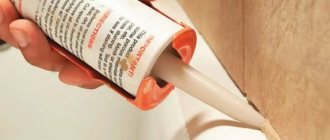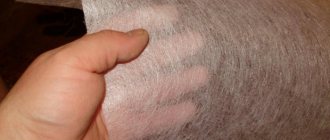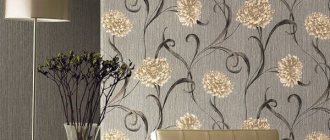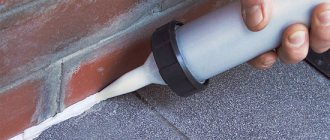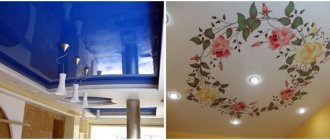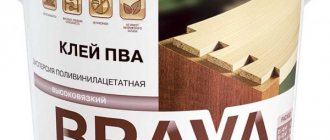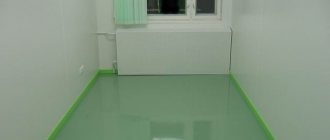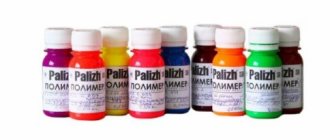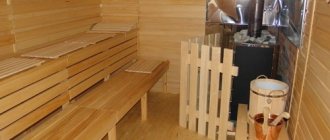The use of high-quality varnish for baths and saunas is considered one of the most effective ways to protect wood from swelling with moisture, material degradation and preventing the growth of pathogenic microflora. You can, of course, use the “old-fashioned” recipes and leave the lining as is, without covering, but such a sauna will require significant effort to clean, clean the walls and thoroughly dry the room.
What is better bath varnish or impregnating oil?
Both types of materials are quite popular in folk or amateur “sauna building”. A wooden bathhouse building must be protected from water vapor and fungal formations, so a variety of impregnations and polishes are used - from furniture polishes to ship oils. At the same time, few future sauna owners think about the effectiveness and safety of the impregnating material.
Before making your final choice, consider the following:
- Good oil intended for treating wooden surfaces inside a bathhouse is expensive, more than 30 Euros per liter, and the dressing room, floor and ceiling of the steam room will have to be treated every season. As a result, a considerable amount accumulates;
- Using, as some would-be experts advise, purified transformer oil, costing $2/l, turns out to be cheap, but unsafe. According to statistics, baths and saunas soaked in oil burn out three to four times more often than those treated with varnish;
- Oil, unlike varnish, whether water-soluble or polyester-based, does not provide a waterproof film. Hot air and water vapor lead to thermal oxidation and decomposition of hydrocarbons.
All this evaporates under the influence of temperature, so everyone who is in the steam room has to breathe in the impregnating vapors. If you can’t find a good varnish for the sauna, then it’s better to leave the walls as is. You will have to spend more effort and labor on cleaning, but visiting the bathhouse will be guaranteed to be safe for your health.
For your information! For the same reason, organic oil impregnations are not used for processing ship equipment, boats, longboats, and yachts. All wooden parts are treated with alkyd, polyester and epoxy compositions.
Of course, varnish resins and mixtures vary greatly in composition and resistance to hot water vapor. In addition, indoor bath varnish should not emit toxic substances, such as styrene or toluene-based solvents. According to experts, high-quality varnish for saunas and baths, intended for treating walls in a steam room, should not contain mineral additives and complex stabilizer salts, which are always abundant in oil impregnations.
What to choose from the range of bath varnishes
Ideally, for the interior of a bathhouse, it is best to use a special water-based sauna varnish. This does not mean that the varnish film can be washed off the walls of the steam room, like water-based paint. Water-soluble compounds, after being diluted with water, treated with sauna walls and thoroughly dried, become hard and waterproof, like glass.
There are several categories of varnishes used to process a wooden bath:
- For external walls, basement and attic structures;
- For floors, doors, bath furniture and utensils;
- Varnish compositions intended for the walls of a rest room or dressing room;
- Mixtures and emulsions for treating saunas and steam rooms.
Varnish materials for different parts of the bath vary greatly in properties and, above all, in price. Therefore, you should not pay attention only to universal varnishes; their effectiveness is low. Or go to the other extreme - purchase expensive specialized compounds for treating the entire bathhouse.
Coatings for different types of surfaces
Here we have already mentioned that the temperature regime of the steam room is not uniform; there are places with more and less high temperatures. It is logical that when the furnace is operating, the areas next to it and under the ceiling will be the hottest, because heated air is lighter than cold air and tends upward.
Therefore, floor coverings differ from ceiling and wall coverings. Due to the fact that much has already been said above, we will briefly go over all types of steam room surfaces in a bathhouse and how to treat them.
How to treat walls
You can learn about what and how to cover a steam room from this article. Here we will say that there are only two options - it is either a solid log/timber or lining. In both cases, we are talking about natural wood, so all compositions are focused specifically on it.
How to paint a log house in a steam room
You already know the first option - do not paint with anything. But if for some reason this option is not suitable for you, then you can cover the steam room in a bathhouse made of timber or logs with either wood impregnation acrylic varnish.
In principle, the wood will not darken and will dry out less when treated with conventional impregnation, but you will have to spend quite a lot of it. You can calculate the quantity by asking the sellers about the number of layers and impregnation consumption per square meter.
Water-based varnishes will also protect wood, and they are more decorative due to additives - color or... mother-of-pearl. Yes, that’s right - we came across Tikkurilov’s acrylate varnish “Supi Arctic” with the addition of mother-of-pearl. This was probably supposed to symbolize, in contrast, the flickering of snow in a hot steam room.
Color schemes, as already mentioned, have long ceased to replicate only the yellow and brown colors of different types of wood, but most of us are conservative and do not want to see turquoise-colored wood.
How to treat lining in a steam room
The lining in the steam room of the bath should be treated with the same compounds that you would use if you had a bathhouse made of logs.
ADVICE! We recommend that you carry out the initial processing of the lining even before its installation, painting the back side of the profile board too. It is clear that after installation, only its front part will be available to you.
Useful video
We have a detailed article on how to treat lining in a bathhouse. You can watch the link or watch the video version below.
Floor treatment
If you have a ceramic tile , then it does not need additional treatment. But if it is made of wood, then it would still be worth protecting it from moisture. Here, too, you can choose to use either impregnations or aqualacs.
Above we talked about the permissibility of using yacht varnish - this type is designed to cover wooden boats and yachts that remain in water for a long time, so periodic spills of water on the floor are not dangerous for such varnish.
If you are still worried about the release of volatile organics, measure the floor temperature yourself while vaping. If it does not exceed 30 degrees, there is nothing to worry about.
BY THE WAY! There is no reason to worry about the floor next to the stove - usually this area is reliably protected. It is preferable to place the stove on a brick podium trimmed with tiles, and the heaviest varieties have their own mini-foundation. In addition, a metal sheet is always placed in front of the firebox to protect against sparks.
The main difference between floor coverings is that they take into account the fact that we walk on them, and friction leads to abrasion. Therefore they must be more durable. However, nothing prevents you from purchasing a composition without strength-increasing additives. It will just have to be renewed from time to time.
Ceiling treatment
Despite the fact that the ceiling is the hottest part of the steam room (not counting the space next to the stove), the coverings for it are usually the same as for the walls. Of course, they must be specialized specifically for the steam room.
How to paint the shelves
You will find detailed material on how to paint the shelves of a steam room in a bathhouse on this page.
Here we will say that varnishes and paints are not suitable for shelves, because they are in contact with the human body and their thermal conductivity is different from wood, so a layer of varnish or paint could burn the skin.
The only available option is impregnation. They will prevent the shelves from darkening and smelling of sweat. And at the same time, they will increase their durability, because the shelves are usually made of linden or aspen, whose wood is soft and not resistant to rotting and infection.
How to cover windows and doors
Windows and doors are also most often made of wood. The exception is glass sauna doors, made of solid heat-resistant fabric. However, they also have wooden boxes.
In any case, the same compositions should be used to cover the doors as for the walls of the steam room. At least from the inside. From the outside (if necessary), you can use any composition that will match the overall design of the room. Read more here.
As for windows, their very presence in the steam room is a controversial issue. But if they are made, then they are thick, with several glasses. The outer part facing the street is exposed to precipitation, so it can be protected with the same yacht varnish (if it is not made of PVC on the outside). The interior can be coated with either acrylic varnish or impregnation.
What is not suitable for treating bathhouses?
Acrylic water-borne varnish for baths and saunas, intended for exterior facade work, is definitely not suitable. Such materials are inexpensive, but apart from their decorative qualities, bright shine and beautiful tone, they are of little use. It is possible to open the outer walls, but the treatment procedure will need to be carried out annually, while branded coatings remain on the facade of the bathhouse without updating for an average of 5-7 years.
You should not use furniture varnishes to treat walls; they peel off easily and become cloudy when the wooden base is heated or slightly moistened. Any varnish compositions for industrial use should not be used for the interior of baths and saunas. Such materials contain salt adhesives that can cause a severe allergic reaction. The foundation or closed load-bearing elements of the bathhouse structure are treated with polymers.
The best tree for a bathhouse is...
The classic design of both a Russian bath and a Finnish sauna involves interior decoration made of wood. Its obvious advantages are naturalness, environmental friendliness, aesthetics and accessibility. But you should know that not all types of wood can be used in bathhouse construction.
So, the most suitable and most popular are:
- Linden - due to its softness, it is easy to process and is not subject to delamination under the influence of moisture and high temperature;
- Aspen - has a wood structure that is easy to process, affordable, most often used for finishing walls in baths and saunas and making bath furniture;
- Alder - due to its spectacular and bright wood texture, is used mainly for finishing baths and saunas, with an emphasis on beauty and aesthetics.
When constructing and finishing steam rooms, as a rule, preference is given to deciduous trees. The use of coniferous species is not at all advisable due to the possible release of resins when heated. And they, in turn, can have an extremely negative impact on human health.
Varnish mixtures for treating steam rooms and saunas
The best option is definitely considered a specialized acrylic varnish for baths and saunas. For the humid atmosphere of a Russian bathhouse, it is best to use a varnish composition that gives a very dense film coating.
You can, of course, buy an expensive Tikkurila or Belinka, but you can get by with a very good Eurotex Sauna. Essentially, this is a specialized material with organic additives that produces a film that is durable and resistant to moisture and temperature.
Just like Tikkurila. Eurotex Sauna contains antifungal disinfectants, but they are practically inaccessible for contact with the skin of the hands, feet, and other parts of the body. The secret of the varnish is that all antiseptics are dissolved in a water base, which penetrates deeply into the thickness of the wood, leaving only a dense layer of polymer on the surface.
According to Eurotex reviews, the Sauna has never caused allergies, even with prolonged use of the sauna. In addition, due to the smooth surface of the varnish layer, dirt, dust and detergent residues practically do not stick to the coating.
For very hot rooms it is better to use Neomid varnish for baths and saunas. This material is called “Sauna”, it is easily recognized by the designation “heat-resistant” on the packaging. It must be applied in several layers with thorough drying and intermediate polishing of the surface. The process of applying varnish is simple, although it will take several days. But, according to reviews, Neomid varnish for baths and saunas is considered the most heat-resistant, easily withstanding heating up to 150 ° C.
For your information! Not all waterproof acrylic materials can be used to treat bathhouse ceilings.
Materials for processing furniture and floors
For the dressing room and rest room, you can use cheaper varnish compositions. Any high-quality universal varnish is suitable for these purposes, from “Supi Arctic”, produced by Tikkurila, to “Sauna Natura” from Teknos. For very large rooms, you can limit yourself to the domestic product Senezh.
The situation is more complicated with floors and furniture. For floors in relaxation rooms of baths or saunas, it is best to use polyester and polyurethane varnishes, which are highly resistant to abrasion and moisture. Acrylic flooring materials can only be used in wash bays.
Furniture, especially benches and shelves in a steam bath, are treated with special compounds with reduced thermal conductivity. If you open the shelves in a steam room or sauna with ordinary acrylic varnish, it will be extremely difficult to sit on them, it will be too hot. Therefore, additives based on paraffin-wax fillers are added to varnish compositions. For example, you can use the same Eurotex Sauna with wax. Reviews say that the quality of the coating is no worse than when using from Tikkurila.
Varnishing the bath floor
The floor is first inspected for the integrity of the boards. If there is no damage, then it is washed, dried, and treated with an antiseptic. Manufacturers produce the following compositions for floor treatment:
- in the bathhouse, LM with protective properties “Senezh ecobio” is applied to the new floor;
- Economy formulations include Gladiator-1. It is effective in combating microbial damage;
- varnish for the floor in the steam room bath - composition "Neomid". It highlights the natural beauty of wood texture;
- Acrylic varnish for saunas “Atom-color” is applied in 1 layer. A coating with a dirt- and water-repellent effect is formed.
Features of using varnish impregnation
One of the problems that one has to face when treating the interior of saunas and baths is the correct selection of the color of the varnish material. The first thing that comes to mind when buying a high-quality varnish composition is, without hesitation, take it and apply it with a brush or spray on the walls of the bathhouse. This is exactly what everyone who had to deal with wall decoration for the first time does.
Colorless wood varnish has an insidious and capricious character. During application to wood, the coating is practically invisible; only over time the varnish film will darken and acquire its natural tone. It's easy to overdo it and turn your sauna or bathhouse into a dark, red-brown space.
If you have no experience, then it is best to take a sample of the lining used for tiling the sauna, apply several layers to the surface to dry, and only after a week make a decision to evaluate the color tone and the required amount of varnish.
